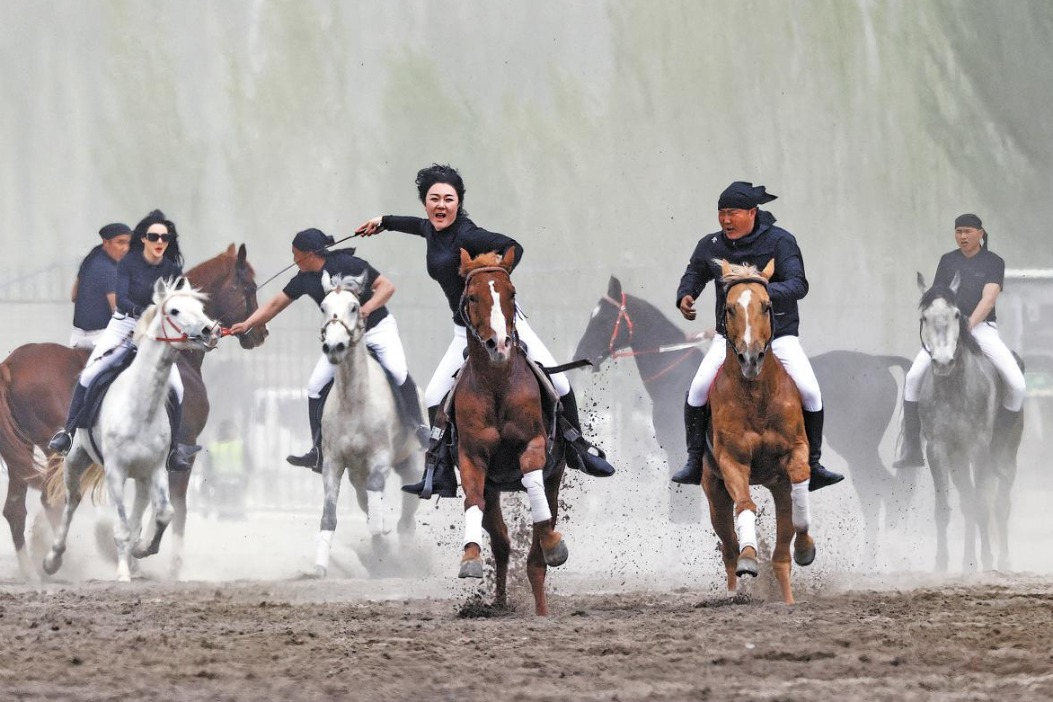Safety fears override cultural concerns

Sky lanterns, small hot air balloons that originated in China centuries ago, have been flown at traditional festivals for centuries, but in recent years they have been accused of posing a safety threat.
The flying lights, also known as Kongming Lanterns, comprise a thin shell made from paper with an opening at the bottom, supported and framed by bamboo strips. A small candle or other flammable material is suspended from the base, warming the surrounding air when lit and causing the lantern to float into the sky.
Although sinologist Joseph Needham (1900-95) noted that the Chinese began to experiment with small hot air balloons as early as the third century, it is believed that the sky lantern was invented during the Three Kingdoms period (220-280), when the country was divided into three and suffered from continuous fighting between warlords.
The origin of the lantern remains debatable, but it is probably related to Zhuge Liang, aka Zhuge Kongming, a well-known military strategist of the time. Many people believe he invented the lantern while besieged by enemy troops. Some say he wrote a message on a sky lantern to summon help, while others believe the lantern got its name because it is shaped like the hat Zhuge always wore.
Whichever is true, the lantern was also used for signaling and testing wind speeds during combat, according to an article published in the academic journal Art & Design in 2012.
"So when civilians saw the lantern, they would know a war was upon them, and that's why the Kongming Lantern was taken as an ill omen at first," wrote the authors, Bai Xin and Li Lina, professors from Capital Normal University.
They said it was not until the Song Dynasty (960-1279) that the lantern lost its military application and became a token of blessing. Whenever a big day fell, such as a festival or the emperor's birthday, people sent lanterns into the sky and prayed for peace and happiness.
Having been incorporated into different local customs, lanterns evolved across the country. Some of those traditions survive today; for example, members of the Dai ethnic group in the Guangxi Zhuang autonomous region fly the lanterns to celebrate New Year in the Dai calendar, while natives of Hainan province use them to pray for more children in their families.
People in Pingxi, in the north of Taiwan, release lanterns bearing wishes into the night sky during the annual Lantern Festival, which falls on the 15th day of the Chinese New Year. The tradition, which has a history of more than 200 years, is one of Pingxi's most-famous cultural symbols.
In recent years, though, a series of accidents have revealed a hidden danger. In 2007, a flying lantern caused a major power outage after hitting a high-voltage cable in Haikou, Hainan province. In 2008, a lantern set a billboard on fire on the roof of a building in Changchun, Jilin province. In 2010, when a historic gate of the ancient city wall in Zhengding, Hebei province, burned down, the cause was believed to be either rogue fireworks or Kongming Lanterns.
The use of sky lanterns is officially restricted nationwide, and local governments have issued bans on releasing or even producing the flying torches. Regulations released by the Hainan government in 2009 stipulate that no lanterns are allowed near airports, railways, forests, gas stations or other vulnerable areas. In 2014, Beijing banned any form of production, sale or launching of the lanterns.
In March, the Fire Department at the Ministry of Public Security conducted an experiment in which a large stone was tied to the base of a lantern in an attempt to prevent it flying out of control. When lit, the lantern twisted in the wind and the shell quickly caught fire. It became a fireball and fell to the ground.
"The lantern could have been carried anywhere by the wind. It was very likely to fall onto electric facilities, tree branches or residential balconies and result in disaster," said one firefighter after the experiment.
In February last year, a lantern was sucked into the engine of a jet as it taxied at Beijing Nanyuan airport before take off. While the incident caused severe delays, the plane was undamaged.
According to regulations issued by the Civil Aviation Administration of China, it is illegal to release birds or fly unmanned balloons or other objects in runway clear zones at airports. Violators can be fined between 20,000 and 100,000 yuan ($2,900 and $14,500).
In January last year, the Ministry of Public Security released a draft regulation stating that people who fly balloons or other objects in violation of public orders would be detained for five to 10 days.
- Global experts chart AI governance path at Shanghai Forum 2025
- Taiwan residents rally against DPP authorities' 'dictatorship'
- UNGA Resolution 2758 Q&A Series: Question 4
- 4.9-magnitude earthquake hits Baiyu, Sichuan: CENC
- Reviving ancient Chinese arts through IP protection
- China plans new energy transport guide by 2035




































